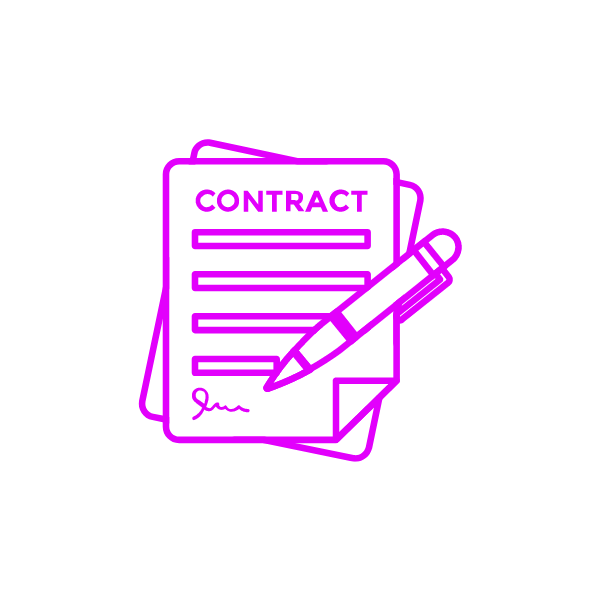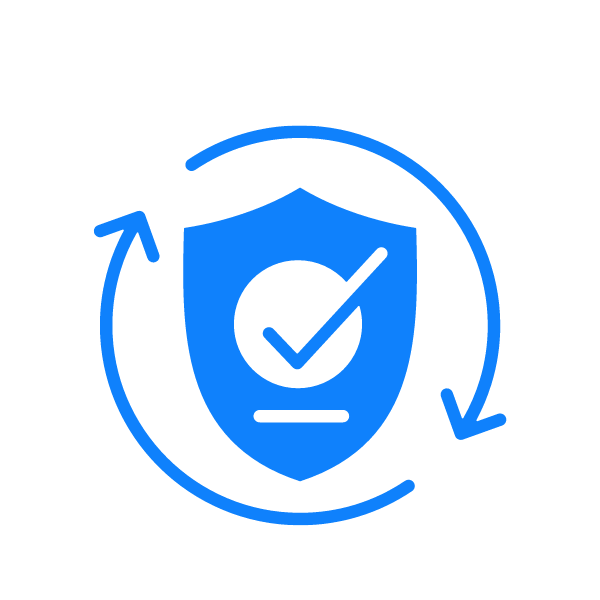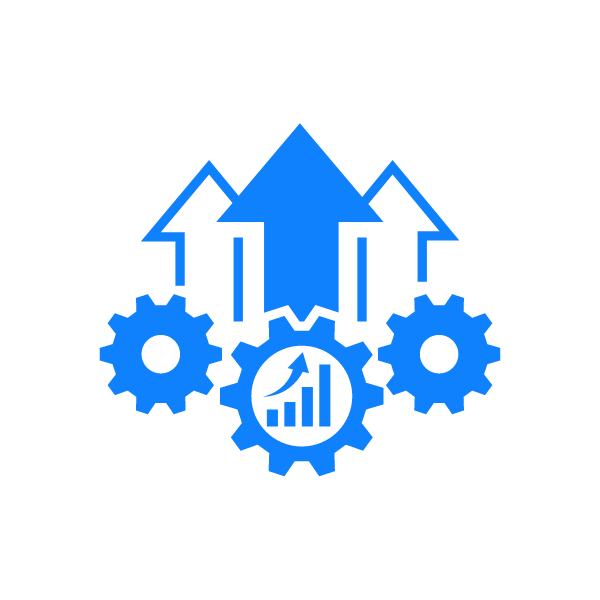The Ultimate Guide To Pest Control Marketing
Digital Marketing, Design and Web Presence in Pest Control
Welcome to our deep dive into digital marketing for pest control. If you’re in the pest control business, you know how competitive it can be to attract and retain customers. That’s where digital marketing comes in—it’s your secret weapon to not just survive but thrive in this bustling industry.
This post is lengthy. It is designed to be an all-encompassing digital marketing lesson, specifcally for pest technicians. We’ll cover everything from building a strong online presence with your website and SEO to leveraging social media and email marketing to connect with customers.
Whether you’re looking to expand your reach, secure more contracts, or just make sure your existing customers keep coming back, you’ll find practical tips and strategies here to help you achieve those goals.
We talk about the challenges and goals of the industry and how digital marketing, design and a strong web presence can help
By the end of this post, you’ll have a solid understanding of how digital marketing can be tailored specifically to the pest control industry to help you grow your business and stand out from the competition.
You can use the below buttons to skip to areas of interest.
If at any point you need more advice or help in these services, please reach out.
Goals
Challenges
SEO
Social Media
Advertising
Content
Online Reputation Management
Email Marketing
Data
Lead Generation
Website
Branding
Personalisation
Marketing Campaigns
Conclusion
Understanding the goals and challenges of an industry is key to helping it grow. When I work with clients, I spend time learning about the industry and business in order to really understand how to help grow the business. That is why this next section is important to understand. At the same time, your goals and challenges are unique to you. Please take what you can from this guide. I’m always happy to chat further.
What are the goals of pest technicians
Hey there! As a pest control technician, you’ve got a bunch of goals to hit to grow and improve your business. You might be looking to expand your customer base, enter new markets, or even acquire smaller companies to boost your presence or even being acquired yourself. Securing steady contracts with businesses is also key, as it helps stabilise your income.
Digital marketing can be a game-changer for you. It helps you reach more people online, showcases your eco-friendly practices, and keeps you on top of customers’ minds with regular updates. Whether it’s through improving your website, using social media smartly, or sending out targeted emails, digital marketing has the tools to help you achieve your goals. It’s not just about being seen; it’s about connecting and building trust with your customers in ways that really matter.
Every pest control tech might have their own specific goals, but good digital marketing makes it easier to meet them while offering top-notch service and staying compliant with the rules. So, let’s dive into how you can use digital marketing to really make a difference in your business. Start by having a think about which one of these are your goals. Which one of these are your challenges. This will help you to get your mind ticking.

Growth and Market Expansion
This encompasses increasing revenue, expanding into new geographic areas, acquiring new customers, and growing through the acquisition of smaller companies. It also includes expanding service offerings to cover more types of pests or related services.

Innovation and Technology Adoption
Involves developing new and more effective pest control methods and technologies, including adopting new business models like subscription services and integrating new technologies to improve service delivery.

Brand and Reputation Management
Includes building and maintaining a strong brand reputation through marketing, quality of service, community engagement, and managing online reputation.

Securing Commercial Contracts
Aims at obtaining long-term contracts with businesses, schools, hospitals, and government buildings to ensure stable revenue streams.

Customer Retention and Loyalty
Focuses on keeping current customers through excellent customer service, follow-up support, and maintenance contracts that encourage repeat business.

Operational Efficiency
Focuses on streamlining operations to reduce costs, such as optimizing routes for service calls and improving training programs for technicians.

Safety and Health
Ensuring the safety of both employees and customers by adhering to health and safety regulations and using the safest methods for pest control treatments.

Leadership and Competitive Edge
Aiming to become the leading service provider in specific markets through superior service, extensive local knowledge, and competitive pricing.

Sustainability and Compliance:
Combines implementing environmentally friendly practices with staying compliant with local, state, and federal regulations. This goal ensures operations are both eco-friendly and legally sound.
Back to contents
What are the challenges the pest control industry faces? How can marketing help?
Running a pest control business comes with its own unique set of challenges. From the seasonal nature of demand to navigating strict regulations and standing out in a crowded market, each obstacle requires smart, strategic solutions. That’s where digital marketing, effective branding, and a robust online presence come into play.
Digital marketing offers powerful tools to overcome these hurdles. With targeted online advertising, you can attract customers even during off-peak seasons. By leveraging these tools, your pest control business can not only meet but also exceed customer expectations, improve service delivery, and ultimately, drive growth. This introduction sets the stage for exploring how each digital marketing strategy can be specifically tailored to turn the industry’s challenges into opportunities for expansion and success.

Seasonal Demand
Adjust your digital marketing efforts to coincide with peak pest seasons, ensuring that your advertising targets customers precisely when they are actively seeking pest control solutions.

Regulatory Compliance
A well-maintained website and active social media presence provide platforms to educate customers about regulatory changes and how your services comply, enhancing transparency and building trust.

Customer Education
Through content marketing, including informative blog posts, how-to guides, and educational videos, you can help demystify pest control services, informing customers about the benefits and safety of professional pest management.

Intense Competition
Branding becomes crucial in a crowded marketplace. A strong brand identity, supported by a professional website and strategic online marketing, can differentiate your services and communicate your unique value proposition.

Safety Concerns
Digital platforms allow you to highlight the safety measures and health benefits of your pest control services, reassuring customers about the security and effectiveness of your methods.

Technological Adaptation
Implementing the latest in web technologies and digital marketing tools not only streamlines your business operations but also enhances customer interaction and service delivery.

Environmental Impact
Digital marketing provides an avenue to promote your commitment to sustainability. Showcasing eco-friendly practices through your online content can appeal to environmentally conscious consumers.

Customer Retention
CRM tools integrated into your marketing strategy can help track customer interactions, personalize communication, and foster loyalty through targeted email marketing and personalized offers.

Market Leadership
SEO and local SEO strategies improve your online visibility, making it easier for potential customers to find your business. This positions you as a leading provider in your local market.

Operational Efficiency
Advanced web solutions like online booking systems and customer service chatbots can optimize operational efficiency, reducing overhead and improving user experience.

Safety and Compliance
Highlighting your adherence to safety regulations and your proactive measures through your digital content reassures potential clients of your professionalism and commitment to high standards.

Innovation in Services
Showcasing your innovative approaches and new technologies on your website and in your marketing materials can set you apart from competitors and attract tech-savvy customers.
Back to contents
The Importance of SEO for Pest Control Services
Before we begin, SEO is a HUGE component of growing your pest control business. It is also an extensive subject, one that takes years to master. In this guide, I can only cover some of the basics but I will cover SEO more extensively in the free learning resources and some more SEO specific for pest control will on published soon. Join the free email marketing course to not miss this information or talk to me about your SEO.
SEO, or search engine optimization, a critical component of pest control marketing, is all about optimizing your website to be easily found by potential customers. when they type a query into search engines like Google. Think about what you do when you need a service — you probably search for it online, right? Your customers do the same.
Search Engine Optimization (SEO) is a crucial tool for any pest control business looking to stand out in a competitive online landscape. This section doesn’t tell you how to do SEO. There are other resources for this. It tells you why SEO is so important for pest control.
Right Keywords Matter: It’s vital to target the right keywords—those that not only drive traffic but are also likely to convert visitors into customers. These keywords should align with the search intent of your prospective clients, such as “termite inspection services” or “emergency pest control.”
Highly Competitive Field: The goal of SEO is to get your website into the top 3 search results, as these positions receive the majority of clicks. In fact, the top three Google search results get 75.1% of all clicks. Being in at least the top 10 should be a minimum target, as this ensures you appear on the first page.
Competition with Large Companies: Often, you’ll be competing against larger companies that have the resources to hire specialized SEO agencies. This competition makes it essential to focus on both broad and niche aspects of SEO to carve out your space in the search results. Consider that every pest technician wants to be in the top 10. Why should you be the top 10? You can’t pay your way into it like ads. (but you can pay an SEO professional). This is why a strong focus on learning SEO is so important.
Impactful Small Changes: There are numerous small, sometimes beginner-level SEO tactics that can significantly enhance your site’s performance. These include optimizing meta tags, using alt text for images, and ensuring your site’s content is up-to-date and relevant.
Ongoing Effort: SEO isn’t a one-time task but a continuous strategy that requires regular updates and monitoring to stay ahead of search engine algorithm changes and competitor tactics.
Conversion Focus: While it’s important to rank well, what’s equally vital is converting that traffic into leads and customers once they land on your website. This aspect ties closely with how well your website is designed to convert visitors, which is covered more comprehensively in the website section.
Site Health: Maintaining good site health is fundamental. This includes ensuring fast load times, a mobile-friendly design, and a secure connection (HTTPS), all of which contribute to better search rankings.
Local SEO: For pest control services, local SEO is particularly crucial. Optimizing for local search involves targeting geographic-specific keywords and ensuring your local listings, like Google My Business, are complete and accurate. This helps attract customers in your specific service areas.
Google My Business: A well-maintained Google My Business profile can dramatically enhance your visibility in local searches. It allows potential customers to find your services quickly, see your ratings and reviews, and even contact you directly from the search page.
By understanding and implementing effective SEO practices, your pest control business can increase its online visibility, attract more targeted traffic, and compete effectively with larger players in the industry.
Quality Content Matters: Google loves sites that offer valuable information. Regularly updating your site with helpful tips on preventing infestations or understanding different pests can boost your SEO ranking. This doesn’t just show Google that you’re an authority in your field; it shows potential customers, too.
Keeping these points in mind will help you climb up the search results, making it easier for local homeowners and businesses to find your pest control services online. Just remember, SEO is a marathon, not a sprint. It takes consistent effort, but the payoff is worth it as you start to see more organic traffic coming your way.
Back to contents
Advertising Your Pest Control Services Without Wasting $$$
Advertising has long been a form used by pest control companies. From directory books, newspapper ads and now online advertising. It’s important to note: It’s very easy to waste money on online advertising if not done correctly. However, utilising techinques like retargetting and correct creatives and messaging can be very lucrative. If doing your own advertising consider the best platform and considering learning yourself with a low budget or hiring an expert. Don’t throw money down the drain.
Online Advertising for Pest Control Businesses
Online advertising is a pivotal component of effective pest control marketing, helping to quickly reach a broader audience., helping you reach more potential customers quickly and effectively. This section doesn’t tell you how to advertise, it talks about the type of advertising you should consider, as well as the pro’s and con’s. Hopefully, this will help you make a decision about where to put your advertising dollars.
Pay-Per-Click (PPC) Advertising: Platforms like Google Ads allow you to display ads in search engine results when people look for pest control services. You only pay when someone clicks on your ad, making it a cost-effective option.
– Pros: Immediate visibility, precise targeting.
– Cons: Costs can escalate if not managed properly; requires ongoing investment to maintain visibility.
Social Media Ads: Platforms like Facebook, Instagram, and even LinkedIn offer targeted advertising options. You can set up ads to target specific locations, age groups, or interests related to home improvement.
– Pros: Engages a broad audience, ideal for visual promotions.
– Cons: Requires constant tweaking and monitoring to ensure optimal performance.
Retargeting Ads: These ads specifically target users who have visited your website but didn’t make a booking. By displaying your ads as they browse other sites, you remind them of your services and encourage their return.
– Pros: Highly effective at increasing conversion rates.
– Cons: Can be perceived as intrusive if not correctly timed. Is also quite technical
Local Service Ads: Google’s Local Services ads appear at the top of the search results for local service searches. Being verified to appear as a Google Guaranteed business can significantly boost trust and clicks.
– Pros: Increases credibility and local visibility.
– Cons: Requires strict adherence to Google’s guidelines and standards.
Video Ads: Platforms like YouTube are excellent for video ads where you can create content about pest prevention or behind-the-scenes looks at your services.
– Pros: Highly engaging and effective for building trust.
– Cons: Can be costly to produce high-quality videos.
Banner Ads: Place these on websites that your potential customers might visit. Design engaging banners that quickly convey the value of your services and provide an easy pathway to your website.
– Pros: Good for raising awareness.
– Cons: Less effective at conversion without a compelling call-to-action.
Native and Offline Advertising: Sponsor local events or print media to enhance your community presence.
– Pros: Builds local brand loyalty and can be effective in community engagement.
– Cons: Hard to measure direct ROI; often slower to show results.
Are your ads working? Track your Return On Investment (ROI)
Measuring the ROI of these advertising methods involves tracking not only the immediate conversions but also long-term engagement and customer lifetime value. Tools like Google Analytics and conversion tracking on social media platforms can help measure the direct impact of your ads.
To optimize ROI, continuously analyze which advertising forms bring the best results for your business and adjust your strategies accordingly. For instance, if PPC brings more immediate bookings, while social media ads increase brand awareness, balance your budget to invest more in what works best for your goals.
By understanding and leveraging these various advertising strategies, your pest control business can create a balanced marketing approach that not only reaches potential customers effectively but also maximizes return on investment, ensuring that every dollar spent contributes to your business growth.
Back to contents
Mastering Content Marketing: Engage and Educate Your Pest Control Audience
Before I confuse anyway, content marketing as a whole falls under many channels of marketing. Content marketing is what you create to get in front of your audience. It falls under catogories of SEO and social media. It leverages marketing funnels. It must stick to brand. It’s a whole rabbit hole to go down. This section really is just an overview. Content marketing is essentially what you create to make all of these other marketing techniques work.
Content Marketing for Pest Control
A strategic part of pest control marketing is content marketing, which involves creating and sharing valuable content to attract and engage your target audience. For pest control, this means providing insights and information that are relevant to your customers’ concerns about pests. Here’s how to get started:
Educational Blog Posts: Write articles that answer common pest-related questions. Topics could include “How to Prevent a Termite Infestation,” “Seasonal Pest Control Tips,” or “The Dangers of DIY Pest Control.” These posts help establish your company as a knowledgeable and trustworthy resource.
How-To Guides: Create detailed guides on preventive measures for various types of pests. These can be formatted as downloadable PDFs that customers can get in exchange for their email address, helping you build your email list.
Infographics: Design infographics that easily explain the pest life cycles, tips for pest-proofing a home, or statistics about pest infestations. Infographics are highly shareable and great for catching the attention of users on social media.
Videos: Produce video content showing your team in action, explaining different treatment options, or providing educational content about specific pests. Videos can be particularly engaging and give a personal touch to your digital presence.
Customer Stories: Share case studies or testimonials from happy customers. This not only provides social proof but also illustrates real-life scenarios of how your services have helped solve pest problems.
Seasonal Content: Take advantage of seasonal trends in pests to create timely content that will be relevant to what your potential customers are experiencing. For example, content about preventing pests in the summer can be promoted just before the season starts.
Interactive Content: Consider adding quizzes or surveys like “Identify This Pest” or “Do You Need Professional Pest Control?” Interactive content can be a fun way for users to engage with your brand and can provide you with valuable insights into your audience.
SEO Optimization: Make sure all your content is optimized for search engines to improve visibility. Use relevant keywords, meta descriptions, and include internal links to other areas of your website to boost SEO.
By implementing a robust content marketing strategy, your pest control business can attract more website visitors, convert them into leads, and establish a reputation as an expert in the field. This approach not only educates your audience but also builds the kind of trust that turns casual readers into loyal customers.
Back to contents
Mastering Online Reputation Management for Pest Control Services
Your online reputation is the most important marketing asset you have. When someone is deciding between you and another pest controller who does the “same job” for the “same price” or cheaper. It will come down to reviews. Your Google reviews is potentially where you need to focus the most.
On top of this reviews are helpful for SEO. Testimonials helpful for converting. When aiming for commericial contracts, case studies will keep you in the running. Maintaining a strong online reputation is essential, as many potential customers will search for your services online before deciding to hire you. Here’s how you can manage your online reputation effectively:
Monitor Reviews and Feedback: Regularly check reviews on platforms like Google, Yelp, and Facebook. Responding promptly to both positive and negative reviews shows that you value customer feedback and are committed to improving service quality.
Encourage Satisfied Customers to Leave Reviews: After a service is completed, encourage happy customers to leave a positive review online. This can often be facilitated through follow-up emails or SMS messages with links to your preferred review platforms.
Manage Social Media Presence: Keep your social media profiles active and professional. Post regularly and engage with your followers. Social media can be a double-edged sword, so it’s important to maintain a positive tone and respond to any customer inquiries or complaints swiftly and diplomatically.
Address Negative Reviews Constructively: When you receive negative feedback, address it constructively. Apologize if necessary, and offer to resolve the issue offline if it’s complex. This not only potentially salvages that customer relationship but also shows others that you’re responsive and responsible.
Use ORM Tools: There are various tools available that can help you monitor mentions of your business across the web. These tools alert you when your business is mentioned or reviewed, allowing you to respond quickly.
Create Positive Content: Regularly publish positive content about your services, customer stories, and business achievements. Blogs, videos, and infographics can help improve your search engine visibility and push down any negative content in search results.
Professional Website: Ensure your website reflects the professionalism of your business. It should be user-friendly, informative, and visually appealing, as it often creates the first impression of your business for many customers.
By actively managing your online reputation, you can significantly influence how your business is perceived online. This not only helps in attracting new customers but also in retaining existing ones, as they feel reassured by your proactive engagement and commitment to quality service.
Effective Email Marketing Strategies for Pest Control Services
Email marketing is perhaps the best use of your marketing time. Your email list, when used correctly, is your platform—nobody can take that list away from you. By not leveraging your email marketing, you are missing out on retaining repeat customers in the sales funnel. Essentially, you’re leaving money on the table.
In pest control marketing, email remains a cost-effective tool for reaching customers and driving engagement. For pest control businesses, it offers a direct line to communicate with both potential and existing customers. Here’s how to leverage email marketing to its fullest potential:
Welcome Emails: Start building a relationship with new subscribers by sending a welcome email. This initial contact should introduce your company, explain what types of emails they can expect to receive, and thank them for subscribing. You can also include a special offer or discount to encourage their first booking.
Educational Content: Send regular emails that educate your audience about pest prevention tips, seasonal pest issues, and the importance of professional pest control services. This not only provides value to your subscribers but also positions your company as an expert in the field.
Promotional Campaigns: Use email to inform subscribers about special promotions, new services, or exclusive discounts. This can be particularly effective for encouraging repeat business and seasonal services, such as pre-summer inspections or winter proofing.
Customer Testimonials and Case Studies: Sharing success stories and customer testimonials through email can build trust and reassure potential customers about the quality and effectiveness of your services.
Personalization: Tailor your emails to the recipient’s interests or past interactions with your company. Use their name, reference past services, or make suggestions based on their location or season. Personalization increases the relevance of your messages and can enhance the response rates.
Re-engagement Campaigns: Target inactive subscribers with re-engagement campaigns. These emails can ask for feedback, offer special incentives to book a service, or simply share what’s new with your business.
Feedback Requests: After completing a service, send a follow-up email asking for feedback. This shows customers that you value their opinion and are committed to continuous improvement. You can also encourage satisfied customers to leave a review on your Google My Business or social media pages.
Segmentation: Segment your email list based on customer behavior, preferences, or demographics to send more targeted communications. For example, separate residential customers from commercial contract clients to tailor the messaging and offers.
Compliance: Ensure that your email marketing practices comply with regulations like the CAN-SPAM Act or GDPR for European customers. This includes providing a clear way to unsubscribe and respecting subscriber preferences.
Analytics: Monitor the performance of your email campaigns through metrics such as open rates, click-through rates, and conversion rates. Use this data to refine your strategies, improve content, and better target your audience.
By integrating these strategies, your pest control business can effectively use email marketing to grow its customer base, enhance customer loyalty, and increase overall engagement. Well-executed email campaigns provide a high return on investment by keeping your brand top of mind and encouraging ongoing customer relationships.
Back to contents
Leveraging data to Propel Pest Control Success
In pest control marketing, harnessing data might sound daunting but is incredibly effective. However, you don’t need to be a data scientist to take advantage of insights. You can also do plenty of free courses to learnt he basics of data management in marketing.
Data might sound like a high-tech concept, but it’s really just about understanding information to make better decisions. For pest control companies, effectively using data can mean the difference between guessing and knowing what your customers need. Here’s how simple data usage can enhance your business:
Customer Trends: By keeping track of which services are most requested and when, you can predict demand and prepare your team accordingly. This helps in managing resources efficiently and ensuring high customer satisfaction.
Marketing Effectiveness: Data from your marketing campaigns can show you what’s working and what isn’t. For example, if you notice that certain ads lead to more service requests, you can focus more on those types of ads.
Service Feedback: Collecting feedback through surveys after service completion can give you insights into customer satisfaction. This data helps in identifying areas for improvement and in praising staff who perform exceptionally.
Website Analytics: Tools like Google Analytics can tell you a lot about who’s visiting your website and what they’re looking at. This information can guide you on what content to create more of, or what services to highlight.
Geographic Data: Understanding where your calls are coming from can help you target your marketing efforts more effectively, perhaps even designing specific offers for high-demand areas.
Pest Outbreaks: Tracking data on pest sightings or outbreaks reported in your service areas can help you prepare in advance for potential increases in demand.
By using data in these practical ways, your pest control company doesn’t just react to situations but anticipates and prepares for them, leading to better business outcomes. You don’t need to be a data scientist to see these benefits; you just need to start with collecting basic information and using it to inform your decisions.
Building an Effective Website for Pest Control Services
Can you believe we haven’t captured the art of web design yet! Probably because it’s a big job and such an important one. I’m not going to explain how to create your website. There really is no point in even discussing how IMPORTANT your website is, it’s pretty clear. But I will mention some functions and elements specific to pest control that will really help your website shine.
In effective pest control marketing, your website needs to be both visually appealing and functionally robust.—it needs to be functional, informative, and aligned with your business goals. Here are key elements to focus on:
Online Booking: Incorporate an online booking system if possible. Allowing customers to book services directly through your website can streamline the scheduling process and improve customer satisfaction.
Live Chat or Chatbots: Implementing a live chat feature or chatbots can provide immediate assistance to visitors, answering common questions and guiding them through the booking process.
User-Friendly Design: Ensure that your website is easy to navigate with a clear, intuitive menu structure. Users should find what they’re looking for in just a few clicks, whether it’s service details, contact information, or customer testimonials.
Mobile Optimization: With more people than ever accessing the internet via smartphones, your website must perform well on mobile devices. A mobile-friendly website ensures that users have a positive experience, regardless of the device they use.
Fast Load Times: Speed is crucial for keeping potential customers engaged. A slow website can drive visitors away, potentially to your competitors. Optimize images, streamline code, and consider a reliable hosting service to improve your website’s loading speed.
SEO Best Practices: Implement search engine optimization (SEO) strategies to increase your website’s visibility in search results. Use relevant keywords, optimize your meta tags, and ensure your site structure is SEO-friendly. Local SEO is particularly important for pest control services to target customers in specific geographic areas.
High-Quality Content: Provide valuable content that addresses common customer questions and concerns about pest control. This could include blog posts, FAQs, and detailed service descriptions. Good content not only helps with SEO but also establishes your expertise in the pest control industry.
Clear Calls to Action (CTAs): Your website should guide visitors towards taking action, such as booking a service, requesting a quote, or calling your business. Prominent, persuasive CTAs are essential for converting visitors into customers.
Trust Signals: Include elements that build trust, such as certifications, licenses, awards, and affiliations with industry organizations. Customer reviews and testimonials also play a critical role in reassuring potential clients about the quality and reliability of your services.
Analytics: Utilize tools like Google Analytics to track visitor behavior on your website. This data can provide insights into how people interact with your site, which pages they visit most, and where improvements can be made.
A strong, well-optimized website not only enhances your pest control business’s online presence but also serves as a crucial tool in attracting and retaining customers. By focusing on user experience, content quality, and functionality, you can ensure that your website effectively supports your business objectives.
Back to contents
Effective Marketing Campaigns for Pest Control Services
We have covered quite a lot. No doubt you have so many questions up to this point. I’m always happy to chat. We ahve talked about the types of digital marketing and even how to convert. Now we are talking about how to structure your actual marketing efforts. Centering in on one or two campaigns in order to test what works. This is all about putting your work into action – correctly.
A well-thought-out marketing campaign can significantly boost your pest control business by increasing brand awareness, attracting new customers, and fostering loyalty among existing ones. Here’s a guide to setting up successful marketing campaigns:
Define Your Objectives: Start by defining clear goals for your campaign. Are you looking to increase brand awareness, generate leads, or promote a new service? Your objectives will guide all other aspects of your campaign.
Identify Your Target Audience: Understand who your customers are. For residential services, your target might be homeowners in specific neighborhoods. For commercial services, you could target business owners or facility managers in your area. Tailoring your message to the specific needs and concerns of your audience increases the effectiveness of your campaigns.
Choose the Right Channels: Depending on your audience, select the most appropriate channels to reach them. This could include online advertising, social media, email marketing, direct mail, or local advertising in newspapers and on radio. Combining several channels often yields the best results.
Create Compelling Content: Develop messaging that resonates with your target audience. Highlight the benefits of your pest control services, such as safety, effectiveness, eco-friendliness, or convenience. Use engaging visuals and clear calls-to-action (CTAs) to prompt the audience to take the next step, whether it’s scheduling an appointment or requesting more information.
Seasonal Promotions: Leverage seasonal trends to create timely marketing initiatives. For example, initiate a campaign in early spring to promote preventative treatments for ants or termites.
Utilize Local SEO: Enhance your local online presence so that your business appears at the top of search results when potential customers are looking for pest control services in your area. This includes optimizing your Google My Business listing and collecting positive reviews.
Measure and Adjust: Use analytics to track the success of your campaigns. Look at metrics like engagement rates, conversion rates, and return on investment (ROI). Understanding what works and what doesn’t allows you to refine your strategies and improve future campaigns.
Customer Testimonials and Case Studies: Share testimonials and case studies in your campaigns to build trust and credibility. Real-world examples of your success can persuade potential customers to choose your services.
Engagement Campaigns: Create interactive content such as quizzes or polls related to pest control to engage potential customers. This can also be a fun way for people to learn about the risks of pests and the importance of professional pest control services.
By following these guidelines, you can create effective marketing campaigns for your pest control business that drive results and grow your customer base. Each campaign should be tailored to reflect the unique aspects of your services and designed to speak directly to your intended audience, ensuring maximum impact.
Optimizing the Lead Generation Pathway in Pest Control Services
Everything we’ve discussed so far leads to this crucial section—lead generation. Utilizing SEO, advertising, social media, and email marketing is essential, but the key questions are: What are you using these tools for? What comes next? How do you effectively use them? This section delves into the broader strategy of acquiring customers by leveraging the platforms we’ve talked about.
Lead generation in pest control is not just about attracting leads—it’s about effectively managing the entire journey from initial contact to final sale. This pathway involves several key stages, often visualized as a sales funnel, and each stage plays a crucial role in converting a prospect into a satisfied customer.
Top of the Funnel (TOFU): This stage is all about awareness. Potential customers are just beginning to recognize their pest problems and are searching for information. Here, strategies like SEO, content marketing, and broad-reaching advertising are crucial. They draw people to your website and social media channels by providing valuable information and solutions.
Middle of the Funnel (MOFU): Once you’ve captured their interest, it’s about consideration. Leads at this stage are evaluating their options and deciding whether your service meets their needs. This is where targeted content like comparison guides, customer testimonials, and detailed service descriptions help. Email marketing can be very effective here, offering more specific content that addresses the leads’ particular pest issues or concerns.
Bottom of the Funnel (BOFU): The decision stage. The prospect is ready to choose a pest control service. Here, personalized communication, special offers, or incentives can be the final nudge they need to book a service. Fast and efficient customer service, prompt replies to inquiries, and an easy booking process are critical.
Importance of Nurturing Leads:
Nurturing leads is vital at every stage of the funnel. It’s not just about making a sale; it’s about building a relationship. Regular follow-ups via email, retargeting ads to keep your brand top of mind, and engaging social media content all play a part in nurturing these relationships.
Customer Service: Exceptional customer service must be a core part of your lead nurturing strategy. Quick, helpful responses to inquiries and consistent, high-quality service encourage not just initial conversions but also repeat business and referrals.
Quick and Effective Communication: Speed is often as important as quality. A swift response to an initial inquiry can make all the difference in converting a lead. Ensuring that your sales team or customer service representatives respond promptly to emails, calls, and social media inquiries can significantly boost your conversion rates.
Follow-Up: The lead generation process doesn’t end with the service being carried out. Following up with customers after a service can provide valuable feedback, encourage repeat business, and build long-term loyalty.
Understanding and optimizing each stage of the sales funnel allows your pest control business to not only capture more leads but effectively convert them into loyal customers. This strategic approach to lead generation ensures that every marketing effort from SEO to customer service contributes to your overall business success.
Back to contents
Branding for Pest Control: More Than Just a Logo
It goes without saying that branding is a highly crutical part of marketing. More than just your logo, we are going to discuss branding as a whole. Why it’s so important and what is considered branding.
Effective branding is crucial for any business, including pest control, particularly when you’re looking to secure commercial contracts. It’s about creating a distinctive identity that resonates with both residential and commercial clients, conveying professionalism and reliability. Here’s how branding extends beyond just a logo and can significantly impact your business:
Consistent Visual Identity: While your logo is a key element, your overall visual identity—including color schemes, fonts, and imagery—needs to be consistent across all channels. This consistency helps to build recognition and trust, which are particularly important when you’re trying to impress large commercial clients.
Professionalism in All Communications: Every piece of communication, from your website content to your business cards and service proposals, should reflect a high level of professionalism. Well-designed, cohesive branding materials show potential commercial clients that you are serious and established, which can be a deciding factor in winning contracts.
Brand Messaging: Your brand messaging should clearly communicate what sets your pest control services apart from the competition. This includes your commitment to safety, reliability, customer service, and any specialized services you offer. Effective messaging addresses the specific needs of your audience, especially commercial clients who may require tailored solutions.
Online Presence: A professional, easy-to-navigate website is crucial. It should effectively communicate your brand message, showcase your services, and provide easy contact options. For potential commercial clients, you might also include case studies or testimonials from other businesses you’ve worked with.
Marketing Materials: Ensure that all your marketing materials, whether online or print, reflect your brand identity and messaging. This includes brochures, flyers, email campaigns, and social media profiles. For commercial clients, consider creating customized presentations or brochures that speak directly to their specific needs and concerns.
Trust and Credibility: Strong branding establishes your credibility. It not only helps in attracting new customers but also reassures existing clients about the quality and reliability of your services. This is especially important in the commercial sector, where the stakes are higher.
Employee Branding: Train your employees to be brand ambassadors. Their appearance, how they interact with customers, and even the vehicles they drive should reflect your brand’s standards and values. This is particularly important when your staff are on-site, as they represent your business.
Investing in a strong brand is not just about aesthetics; it’s a fundamental part of building a successful pest control business that appeals to both residential and commercial markets. A well-defined brand helps you stand out in a competitive market and can be a major factor in securing larger, more profitable commercial contracts.
Back to contents
Harnessing Personalisation to Enhance Pest Control Services
This isn’t so much a “digital marketing type” it is more a technique to keep in mind when performing marketing tasks, at any point possble.
A cornerstone of successful pest control marketing is personalization, which means tailoring your marketing messages and offers to meet the specific needs and preferences of individual customers. For a pest control company, this could take several impactful forms:
Targeted Email Campaigns: Send emails that address the specific pest issues common in a customer’s area or even their past pest history with your company. For example, if someone had a termite problem in the past, you might send them tips on preventing termites as the season approaches.
Customized Ads: Use data from website visits, previous services, and customer inquiries to create customized ads that appear on social media or as retargeted ads on other websites. This could include special offers for services that a customer has shown interest in before.
Dynamic Website Content: Adjust the content that visitors see on your website based on their location or the type of information they’ve previously consumed. For instance, showing specific services that are most relevant or popular in their region.
SMS Alerts and Reminders: Send text messages tailored to individual customer needs, like reminders for upcoming service appointments or alerts about pest outbreaks in their area.
Interactive Content: Provide interactive content like quizzes or assessments on your website that help customers identify their pest problems and immediately suggest personalized solutions or products.
Personalization helps in creating a more engaging and relevant experience for your customers, which not only increases the chances of conversion but also enhances customer loyalty. By showing that you understand and cater to their specific needs, you reinforce the value of your services, making customers more likely to return and recommend your business to others.
Conclusion: Transforming Challenges into Opportunities with
Strategic Digital Marketing
Throughout this comprehensive guide, we’ve explored how tailored digital marketing strategies can address the unique challenges faced by the pest control industry. From leveraging the power of SEO to enhance visibility, engaging potential customers through thoughtful content marketing, to nurturing relationships and building trust via effective email marketing—each element plays a pivotal role in driving business growth.
We’ve also discussed the critical importance of maintaining an active and positive online reputation, utilizing the precision of targeted advertising, and the necessity of personalizing interactions to meet customer expectations. By integrating these strategies, pest control businesses can not only reach but resonate with their desired audience, fostering loyalty and encouraging repeat business.
Remember, successful pest control marketing is not just about attracting leads; it’s about converting these leads into satisfied customers through a seamless and satisfying journey from the first click to the final service delivery. Implementing these strategies requires expertise, persistence, and a deep understanding of both digital tools and the pest control market.
If you’re looking to not just compete but excel in the pest control industry, professional assistance can make all the difference. Hiring experts who specialize in digital marketing for pest control can help refine your strategy, enhance your operational efficiencies, and maximize your marketing ROI. Let us help you transform your challenges into opportunities. Contact us today to start your journey towards becoming a market leader in pest control.
Back to contents

Social Media’s Role in Pest Control Marketing and Reputation Management.
Let’s be honest, pest control is not a sexy industry. In the realm of pest control marketing, leveraging social media strategically is key, even though it’s not traditionally seen as glamorous. When you think social media, you think travel, influencers, ecommerce and other industries. What can pest control really show on socials? Reputation! Use social media to built trust. To show social proof and to put a face to the name of either your business, or your employees.
Again, this section isn’t about how to get to 100K followers in 6 months. It’s about how to use social media as a pest control company. Just having an Instagram account and a FB page isn’t going to flock the customers to you. What it does, is show you are real. It conveys trust.
Choose the Right Platforms: Not every social media platform will be right for your business. Focus on those where your potential customers are most active. For most pest control companies, Facebook and Instagram are essentials because of their broad reach and visual capabilities. YouTube is excellent for longer educational videos, while LinkedIn can be beneficial for connecting with commercial clients. Choose platforms that you can manage effectively without overextending your resources
Showcase Your Work: Post before-and-after photos or videos of your pest control projects on platforms like Instagram and Facebook. This visual proof of your effectiveness can persuade potential customers. Always get permission if you’re working in private spaces.
Educate Your Audience: Share posts that educate your audience about preventing pest problems, recognizing signs of infestation, and how seasonal changes affect pest behavior. This positions you as an expert and a helpful resource beyond just a service provider.
Engage Directly with Customers: Use your chosen platforms to answer questions, respond to comments, and address customer service issues. Prompt, friendly interactions enhance your reputation and demonstrate your commitment to customer service.
Promotions and Offers: Leverage social media to share special offers, discounts, or seasonal reminders, like pre-summer termite inspections. These posts can drive bookings and encourage your audience to share and engage with your content.
Customer Testimonials: Sharing positive feedback from past customers can be very influential. If you receive great feedback, ask for permission to share it on your social media pages to build trust with prospective clients.
Stay Active and Consistent: Regularly update your social media with new content to keep your audience engaged and informed. This could be a weekly tip, customer stories, or simple updates about your business. Consistency shows that your business is reliable and ready to assist at any time.
Monitor and Adjust: Keep track of what works and what doesn’t. Tools like analytics provided by the social media platforms can help you understand your audience better and refine your strategy.
By effectively managing your social media presence, you not only attract new customers but also create lasting relationships within your community. It’s a cost-effective way to enhance your brand visibility and establish credibility in the competitive pest control market. Remember, it’s not just about being online—it’s about being active, relevant, and connected to your audience’s needs.
Back to contents